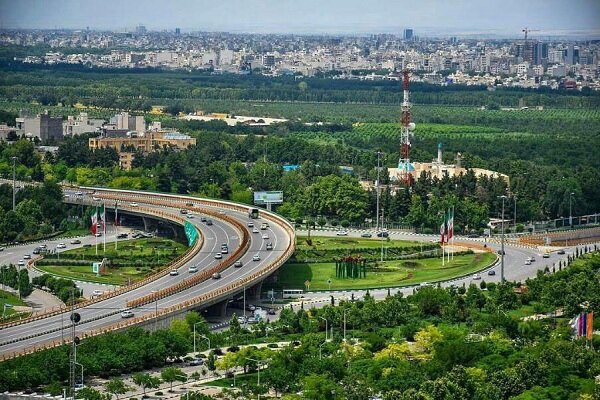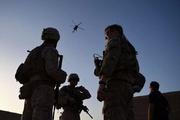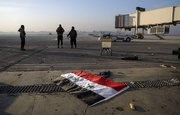Some economists and social scientists believe that should not be returned to the current dense life because large cities are more vulnerable to viruses and accidents.
The analysis on various incidents and crises, such as the outbreak of coronavirus and biological warfare, shows that the most affected areas are densely populated, large and crowded cities, and what mostly remains will be villages and suburbs. Accordingly, experts believe that resilient cities should be developed and prepared for the future.
Urban resilience is the ability or capacity of a city to survive and thrive in the face of disaster, any kind of disaster. It turns out that the capacities that cities or states, or nations need to survive and thrive in the face of all these different threats are pretty broad. It includes a good infrastructure that promotes mobility and sustainable transportation. It’s also cohesive communities where neighbors check in on neighbors. It’s a diverse economy with a strong middle-class jobs base. It’s good governance with multiple stakeholders at a decision-making table. All of those things help communities overcome whatever the next crisis might be.
The outbreak of diseases, which affects all countries today and has claimed millions of lives and killed hundreds of thousands, has doubled the importance of addressing resilient cities where new crises such as biological warfare are more likely to be countered.
Seyyed Abdul-Hossein Sasan, an economic and political analyst, explained that resilience is used for cities, villages, and industry; in all three cases, reliance is defined from the perspectives of natural disasters, accidents, health, economic, social, cultural, physical and ecological characteristics.
Common factors defined for resilience in urban, rural, and industrial areas include resistance to “natural disasters such as floods, earthquakes, and landslides,” “accidents such as airstrikes, explosions, chemical, and microbial bombings, fires, and crime.” And "ecological devastation such as air pollution, acid rain, drought and destruction of natural resources,” he explained.
Social resilience addresses healthy and constructive relationships between citizens, such as different clubs for different ages, genders, religions, and parties, and cultural resilience is a situation in which all social classes with different cultures in the city feel safe and secure, he added.
Resilient cities protect human against crises
Resilient cities can produce as few crises as they can and protect humans against humanitarian crises and unexpected events such as virus spreads, environmental pollution, biological warfare, floods, and earthquakes, and minimize human mortality, Sasan said.
Pointing out that after the coronavirus subsides, we should not be proud and go back to the past, he said "We should not forget that if coronavirus was controlled, crises such as air pollution and the environment would not have been controlled yet so that we need to take the opportunity to promote resilient cities.
Referring to the dark ages before the Renaissance, he said that even now, humans have returned to the dark ages and have no complete information about the novel coronavirus, and even have doubts about recommendations such as whether or not to wear a mask, indicating that humans do not have the most basic information about the disease.
“Today, human beings do not know whether COVID-19 creates immunity among people who have recovered from the disease, and the World Health Organization warns that the second wave of the disease is far more deadly than the first,” he said.
He emphasized that “Today, after gaining great achievements in industrial, scientific and technological life, human beings have suddenly been thrown into a period in which all the achievements and lifestyles that they had organized must be revised.”
According to Sasan, public transport is one of the main causes of coronavirus transmission these days, while various communities have tried to make public trains, buses, and taxis available to everyone, but now they do not know what to do with these expensive vehicles.
Some people are saying that the world will always be the host of coronavirus from now on, he said, adding, all of this shows that we have entered a dark and uncertain age because man does not know whether everything he knows as civilization is in his comfort and well-being.
Emphasizing that during the outbreak, the economy suffered the most, especially in the tourism, transportation, car manufacturing, petrochemical, and fossil fuel sectors, he noted that on the other hand, other industries such as software, computer games, and entertainment have grown.
Given the circumstances caused by the coronavirus, the biggest changes will be in urban development, human housing, and lifestyle, he added.
Human lifestyle will change
If Sars, Ebola, and corona are the new generation of viruses, then the human lifestyle will change more than anything else, and it is probably the most important change in residential complexes, Sasan said.
Studies show that about 110 cities in the world are resilient, he further highlighted.
He went on to In the future, the density of the city created by the new civilization may lose efficiency, and humanity may promote less density.
Global resilience
Referring to coronavirus being completely global and transboundary, Morteza Pedarian, a sociologist, said that post-corona resilience and any decision-making and planning for it should be international and global.
All countries, rich and poor, developed and developing, now consider the four principles of using masks, continuous hand washing, social distancing, and precise behavior in social communication, he said.
Unlike other disasters that have affected most developing countries, COVID-19 has pushed the boundaries of development, and even developed countries have suffered heavy casualties, he lamented.
In various disasters such as floods, earthquakes, and wars, there is emotional support among different members of human society that increases resilience, but in coronavirus crisis, social gatherings and support are less employed, he explained.
Pedarian went on to add that In this case, due to the special conditions of the phenomenon, such as quarantine and the risk of the high prevalence of the disease, it is not possible to approach the infected people and even those around them for sympathy.
He said that all these issues cause the post-corona ecosystem to have certain characteristics and to show its effect in different sectors, This has greatly affected the resilience and vision of humankind in the areas of economics, beliefs, religions, culture, social relations, and collective action.
Pedarian stressed that phenomena such as this pandemic affect human life psychologically and sociologically and that behaviors need to be re-read, which is why we should think of long-term life.
A comprehensive look at city resilience implementation
Ahmad Shahivand, an architecture and urbanism expert, said that the environment of the city is safe, lively, dynamic, its people are smart with the basic information needed, and the performance and activities of this city are defined following human and environmental characteristics.
The resilient city must be able to maintain and sustain stability in these three areas of disasters and crises. For example, in an earthquake, certain groups, such as children and the elderly, must be safe, he added.
He went on to explain that in urban planning, there is a lot of emphasis on having open and semi-open spaces in residential units, but unfortunately, some construction companies blind these spaces and make them part of the built space to make more profit in sales while resilience in such houses is very difficult.
In such cities, for example, there must be public spaces in every neighborhood to provide basic services in times of crisis, and for people to be able to take refuge there, while in our cities today we have ignored that, he lamented.
Gender differences need to be eliminated in creating urban spaces to increase the resilience of cities, he noted, adding, in the post-coronavirus period, all sectors, with government support, need to identify and address challenges, including how urban planning seeks to build buildings from now on or what the transportation system is like.
Planning for all of these requires a comprehensive look at the executive details to make cities resilient, and each of the related bodies and social groups must help each other achieve that, he noted.
With these cities, it is possible to live alongside natural disasters and survive, given the emergence of phenomena such as the outbreak of coronavirus, the development of such cities needs to be seriously on the agenda of community planners and policymakers, he concluded.
First Published in Tehran Times
























Your Comment